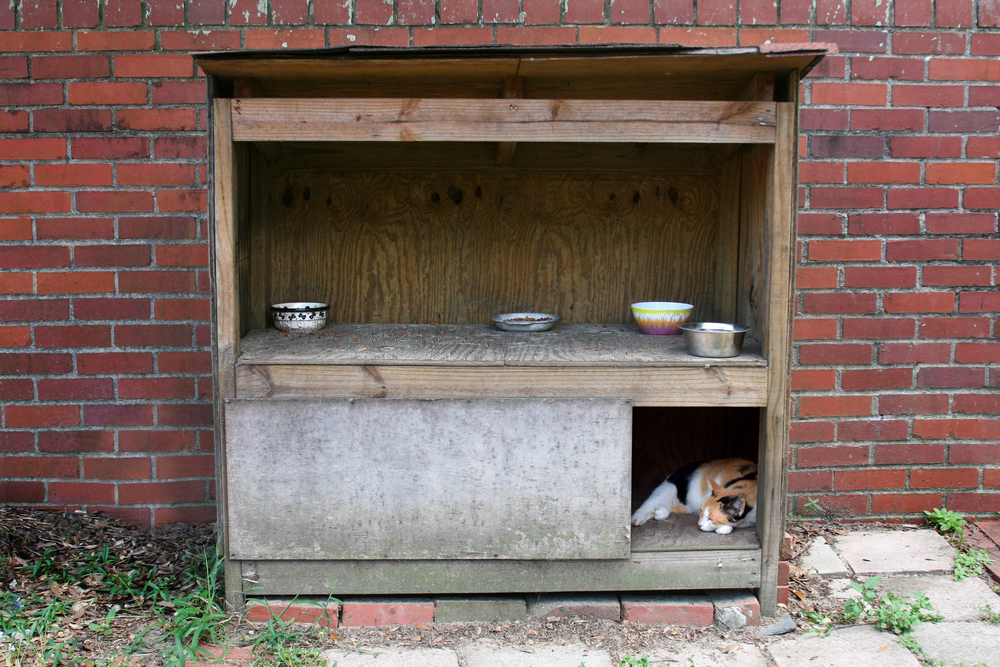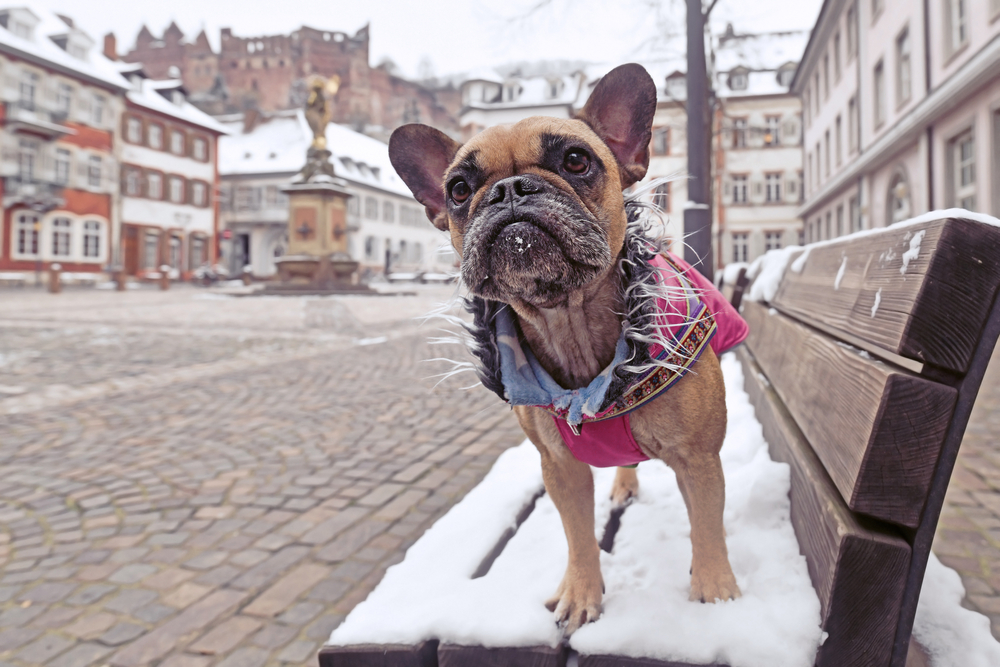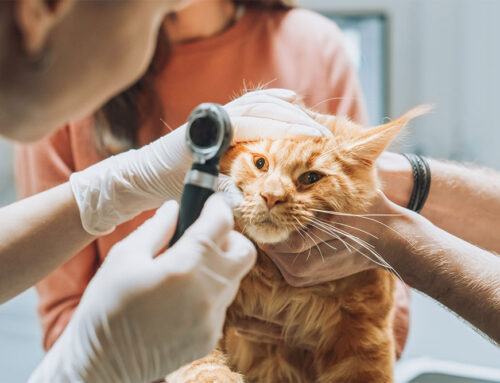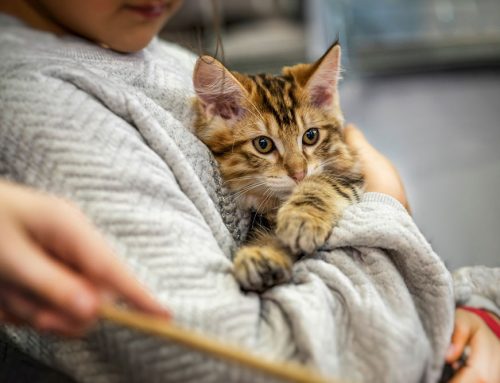Before we know it, winter will be descending on Livingston again. And while every snowy season looks the same to us, aging pets experience new challenges from year to year that require special attention and preparation.
As you stock up on supplies, test the generator, and prepare to settle in for some short days and long nights, ensure your senior pet has everything they need to stay comfy, cozy, and healthy this winter.
#1: Winterize your pet—schedule a senior pet wellness exam
Winter temperatures can be challenging for your senior pet’s immune system, but a pre-winter check-up can help them weather the season. Elderly pets are more likely to develop health problems that often have no visible signs until their late stages. Twice-yearly visits are ideal for identifying age-related conditions, such as kidney and liver disease, endocrine disorders, and cancer. Early detection ensures more effective treatment, and adequate pain control.
Many senior pets suffer from arthritis, which can worsen during cold weather. Stiffness and pain can significantly impact your aging pet’s quality of life, and may put them in danger during the winter—especially if they slip or fall outdoors. Our veterinarians can design effective pain management plans, including medication, weight loss, laser therapy, chiropractic adjustment, or acupuncture, for your pet.
#2: Think warm thoughts—protect your senior pet from the cold
Senior pets cannot regulate their body temperature as well as younger animals, especially if they are a small or toy breed, have a thyroid deficiency, or have thin skin or coat. Although your pet may have been comfortable in winters past, take a closer look this year—if they are shivering, seeking out warm locations, or frequently sleeping in a tight, curled position, they may be feeling the chill.
Dress your pet in a non-restrictive jacket or coat that covers their neck, chest, hips, and abdomen. Well-coated breeds may need protection only when outdoors, while small breeds may enjoy wearing lightweight layers indoors. Check your pet’s clothing regularly for soiled or wet fabric, and examine them for chafing or irritation. Remove clothing daily to let your pet’s skin breathe.
#3: Forget fashion—winter hair care for your senior pet
Bathing in winter can dehydrate your pet’s skin and coat, leading to dry, flaky, and itchy skin. Replace winter baths with a thorough weekly brushing, to keep hair tangle-free, and redistribute oils throughout the skin and coat. Pay attention to areas of friction, such as armpits and the groin, where hair tends to form painful mats, especially if your pet wears winter clothing.
Keep paw pads trimmed short, to reduce snow and ice accumulation. Avoid shaving your senior pet during colder temperatures, because that removes your pet’s insulation, and leaves them prone to dangerous hypothermia. Save the buzz cut for summer. For the winter, let them be shaggy.
#4: Make routine modifications—protect your senior pet from the elements
No matter how frigid the temperature, senior pets can be insistent about their regular routine, including not only frequent trips outside to eliminate but also their daily walk. Saying “No” to those cloudy eyes may be hard, but recreational exercise in sub-freezing temperatures is not recommended. Keep necessary excursions brief, and keep your pet safe, with these suggestions:
- Use pet-safe ice melt — Road salt can burn and irritate your pet’s paws. Use pet-safe ice melt, kitty litter, or sand for non-slip surfaces on your stairs and walkways.
- Make a path — Senior pets can become fatigued or sore lifting their legs and feet through the deep snow. Shovel a path to a level area where they can sniff out a special spot without sinking or struggling.
- Don’t leave your pet unattended — A phone call or distraction may unintentionally leave your pet stranded in the cold. Senior pets with sensory loss may wander away from home, or become trapped or disoriented in the snow. Supervise your pet at all times while outside.
- Modify your exercise routine — If your curmudgeonly senior insists on walking, pick a well-shoveled path, and watch out for ice. Also, reduce your walk time by half. Check your pet’s feet often for irritation or burns. After returning home, dry your pet thoroughly, paying special attention to their feet, to prevent salt damage.
#5: Don’t forget outdoor pets—ensure they have shelter

While we would prefer that all pets live indoors, we know that’s not always possible. Help working dogs, and feral and barn cats escape the elements by providing shelter in an old barn, garage, or other solid structure that has at least three sides, to protect from wind and precipitation. Supply warm, insulating bedding, such as fresh straw and dry blankets. Cat-specific shelters can be built or purchased.
Outdoor pets burn significant calories to maintain their body heat, so feed them extra food during cold weather. Protect water sources from freezing by using heated bowls, or replacing and refilling them often.
See your senior pet through another cold winter by bundling them up with thoughtful preparations—and maybe a cute jacket, too. Contact Livingston Veterinary Hospital to schedule their pre-winter wellness exam.







Leave A Comment